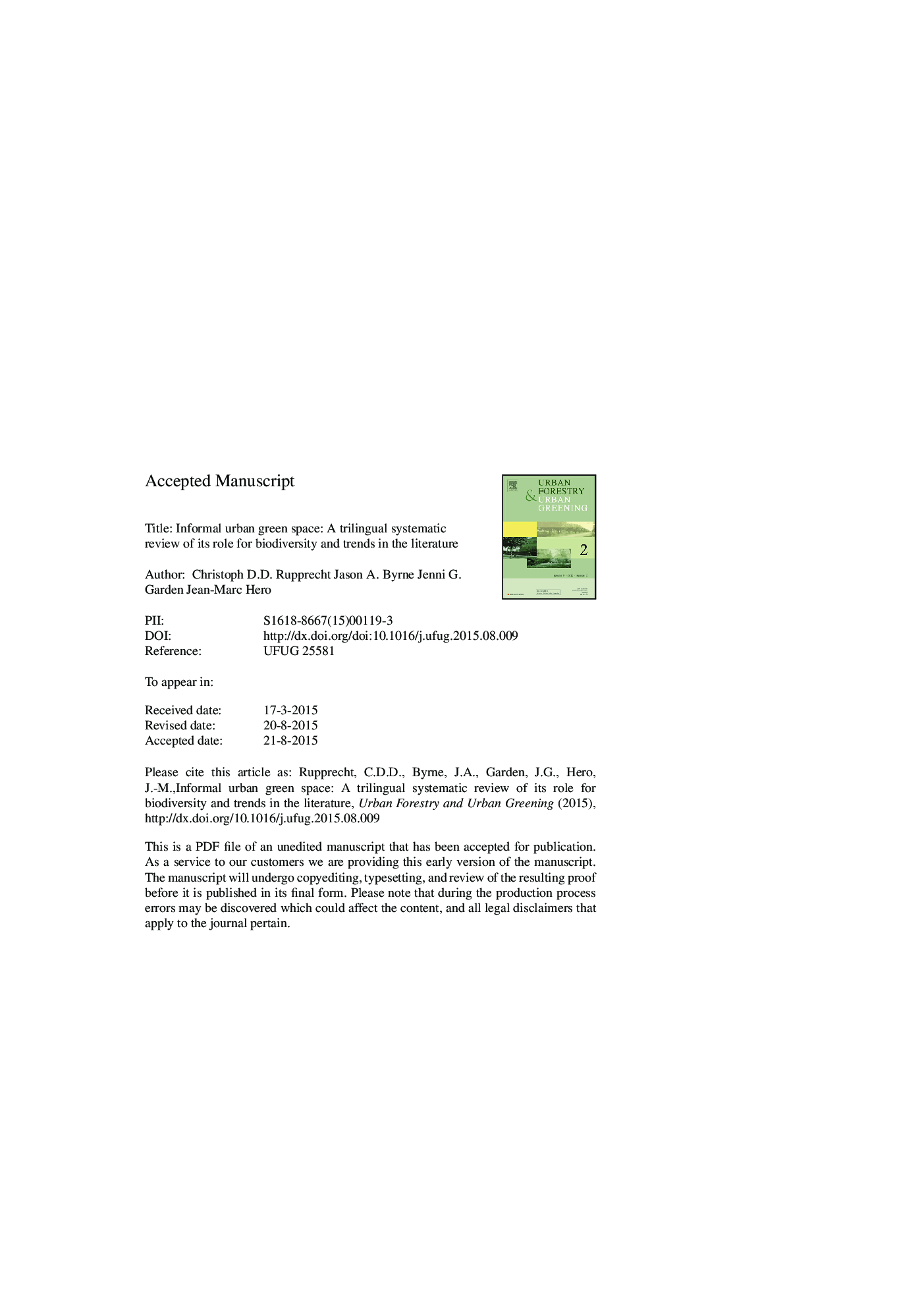| Article ID | Journal | Published Year | Pages | File Type |
|---|---|---|---|---|
| 10252096 | Urban Forestry & Urban Greening | 2015 | 61 Pages |
Abstract
Urban greenspaces harbor considerable biodiversity. Such areas include spontaneously vegetated spaces such as such as brownfields, street or railway verges and vacant lots. While these spaces may contribute to urban conservation, their informal and liminal nature poses a challenge for reviewing what we know about their value for biodiversity. The relevant literature lacks a common terminology. This paper applied a formal definition and typology of informal urban greenspace (IGS) to identify and systematically review a total of 174 peer-reviewed papers in English (152), German (14) and Japanese (8). We identified three main topics: value for conservation (94 papers), factors influencing diversity (80), and non-indigenous species (37). Additionally, we analyzed this literature for temporal trends, spatial patterns, studied IGS types, taxa, climate zones, human impact types, and key authors. Results show IGS plays an important role for biodiversity. Management practices were identified as the most common and negative impact on diversity, while vegetation, site age, distance to city center, and habitat diversity were positive-influence factors. The number and impact of non-indigenous species varied widely. The analysis of literature patterns reveals: an increase in publications over the last 15 years and a strong geographic bias in publications, as well as toward temperate and humid climate zones. Studies of gap, powerline and microsite IGS were scarce, as were studies of mammals and reptiles. Results suggest different maintenance regimes for IGS may improve its contribution to urban conservation. We therefore propose adapting management to the local context.
Related Topics
Life Sciences
Agricultural and Biological Sciences
Forestry
Authors
Christoph D.D. Rupprecht, Jason A. Byrne, Jenni G. Garden, Jean-Marc Hero,
